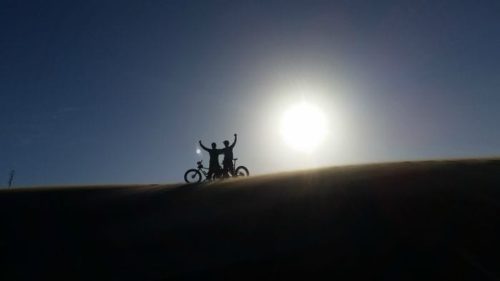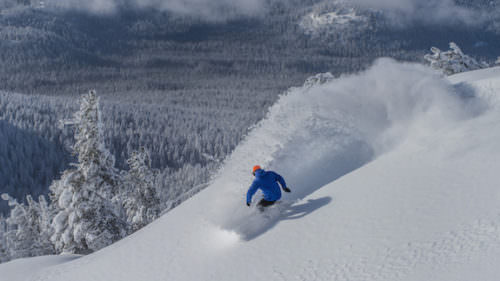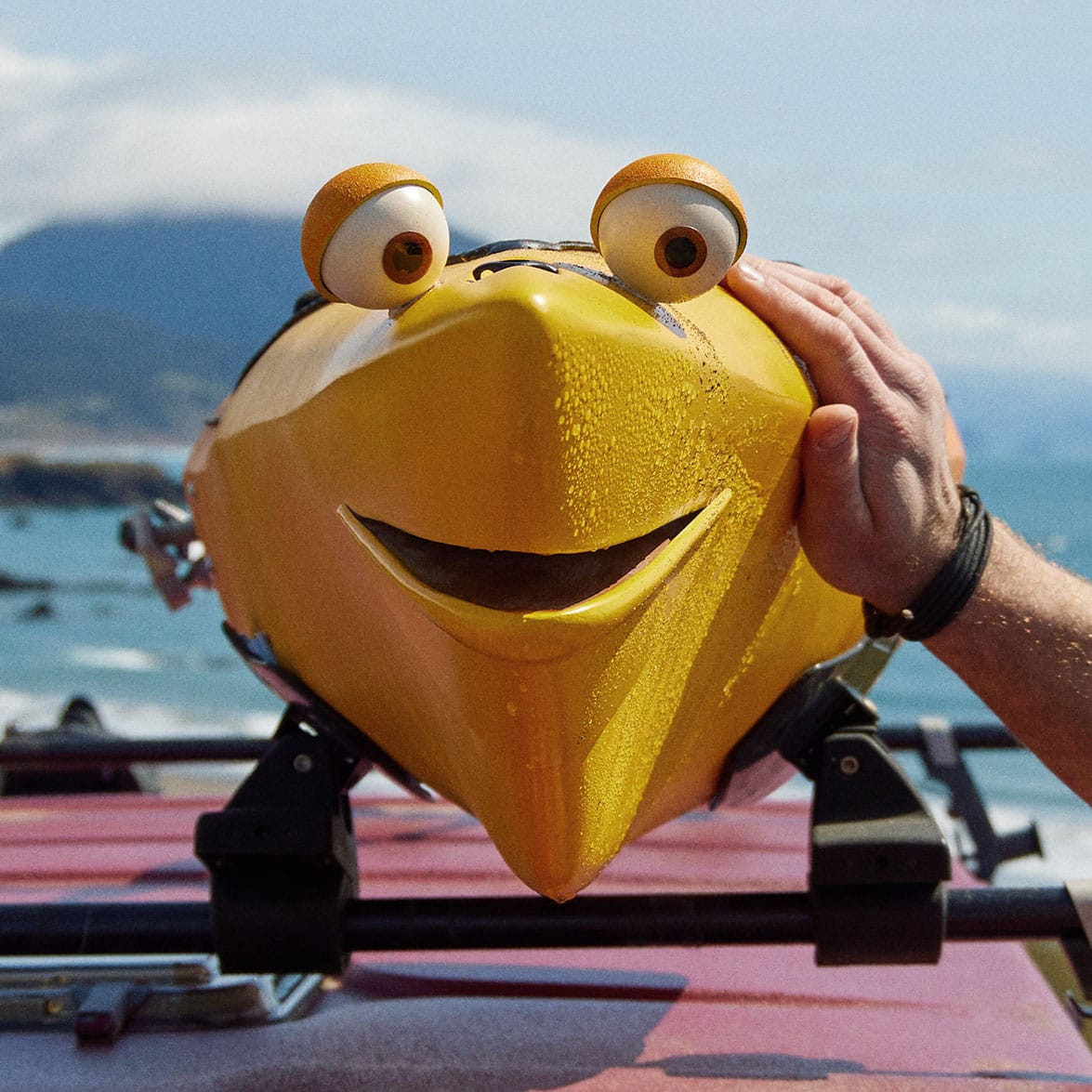Fat biking as a winter sport, isn’t all that new, in fact it traces its history back to the 1980s where bike riders up north in Alaska tinkered with mountain bikes to extend their riding season over snow. But only now the sport is really catching on, with dedicated fat bike trails, easily accessible rentals and tours across Oregon.
The sport is really taking off in Bend where the active outdoor lifestyle is the rule not the exception, and locals and visitors are always looking for new ways to adventure outside. Which is how I ended up at Wanoga Sno-Park early one February morning. I was meeting up with Gary Meyer, whose official title is Winter Trail Steward with COTA (Central Oregon Trail Alliance). Meyer is an early adopter of the sport and the biggest champion of the sport locally. Bill Westhusing also joined us. Originally from Alaska, Westhusing has a deep knowledge of the origins of fat biking and volunteers in grooming the dedicated trails.

It hasn’t snowed for a few days. Meyer shares a saying that is popular among fat bikers (or maybe he just made it up on the spot, either way it rings true): “When the skiing is crappy, the fat biking is awesome.” To translate, fat biking is best when the snow has had time to settle. This is not a deep powder sport, hence the trail grooming.
Today we’re riding a six-mile loop called Outer Loop Trail. The fat bike trail network at Wanoga was developed by Meyer and COTA through an agreement with the Deschutes National Forest; the trails are only available to ride in the winter. Meyer identified the routes, cleared and marked them, and officially began grooming the trails in January 2016. Nowadays the trails are groomed three times a week — currently Wednesday, Friday and Sunday nights. Oregon Sno-Park passes are required between November 1 and April 1. Grooming begins once there’s a solid foot of snow on the ground and continues as long as snow conditions allow or until April.
The parking lot is abuzz when we arrive. Everyone seems to know each other, especially Meyer. Westhusing loans me a fat bike from his quiver, a Fatback Corvus equipped with 4-plus-inch studded tires. Like most fat bikes, the bike doesn’t have suspension, relying instead on the squishiness of the tires which are inflated to a modest 4psi to maximize traction. This, Meyer informs me, is very important. So important in fact that he named the other nearby 3-mile-long fat bike trail 3 PSI to help remind people to deflate their tires to gain the best traction and to preserve the trails (narrower tires leave ruts in the trails).
We set off on the trail — the route is pretty clear: You have to do a little zigging and zagging along the shared-use snowshoe trail, then pretty quickly you turn onto Outer Loop. The trailhead is marked, and along the way there’s flagging on the trees to identify the trail, mostly for the groomers to stay on track as the two-foot wide groomed trail is very obvious.


On the day we headed out, the temps were in the low 30s, clear and sunny. The trail gains just a bit of elevation at the beginning, but it then levels out for a great winding ride through the forest. The studded tires provided an extra dose of welcome traction on some of the banked turns or in places where the trail had iced up under the shadow of the trees. The studs made it a little difficult to carry on a conversation, so we’d stop here and there to chat and say hi to other riders, and more often than not, their happy dogs. (Dogs are welcome on the trail, although be sure to clean up after them.)
At one point toward the end of the ride, we stop to take in the huge views of Mt. Bachelor alongside a clearing that looks like it goes all the way to the mountain. Meyer and Westhusing both get big grins on their faces and talk about riding here when the crust forms. Crust conditions are the equivalent of a big swell to surfers, or a powder day to downhill skiers. Westhusing tells me that crust conditions are most likely in the early spring. It’s when the top layer of snow is supportive enough that fat bikers can just ride anywhere, trail or not.
“It’s like a big skatepark,” says Westhusing.
“You can ride in places that you can’t even access in the summer,” adds Meyer.
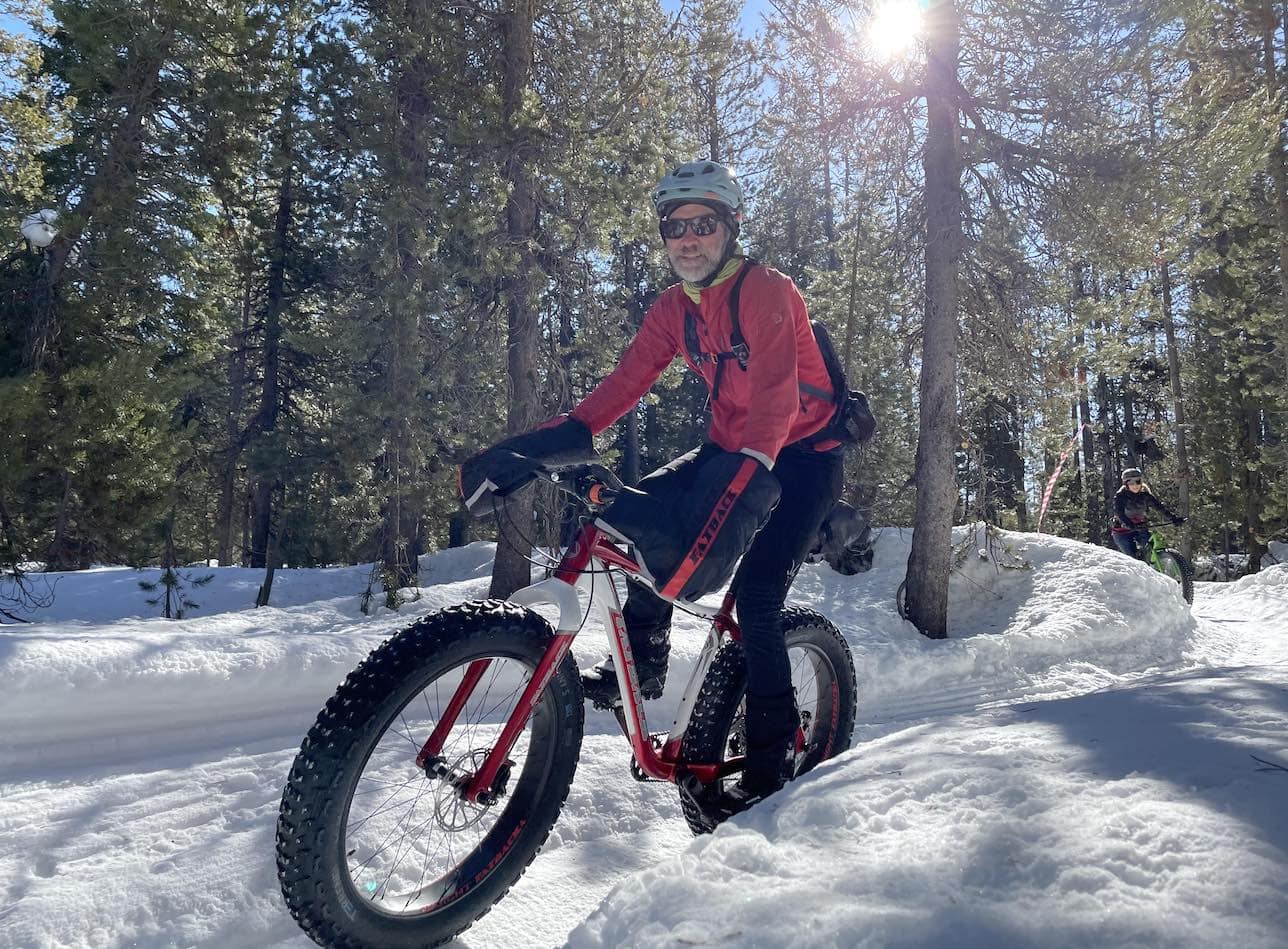
Beyond the groomed trails of Wanoga Sno-Park, you can also fat bike on the snowmobile trails continuing up from Swampy Sno-Park up to Edison Sno-Park, even all the way to Mt. Bachelor. From Mt. Bachelor out to Elk Lak is another option (a word of caution to wear bright colored clothing, employ lights for visibility, stay to your right of the trail and yield to snowmobiles for safety as fat bikers are the newest trail users). There are plenty of other popular rides which are shared, along with current trail conditions on the Central Oregon Fatbikes community page on Facebook. If you’re unsure about heading out on your own, Cog Wild offers single-day, guided fat bike rides, which include fat bike rentals, transportation and guiding.
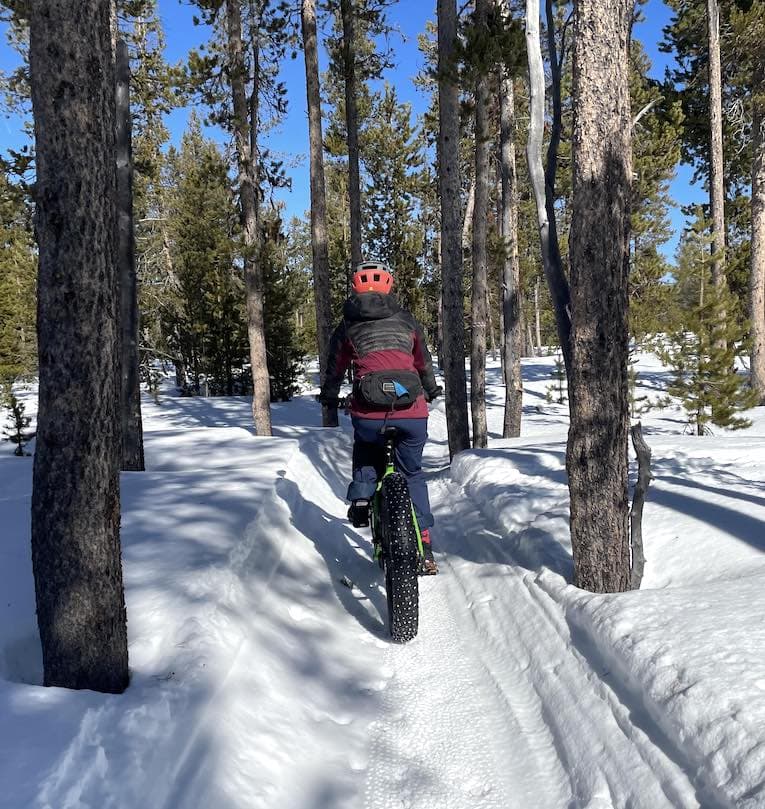
Additional Info
- Sno-Park permits are available online at the Oregon DMV or at authorized Sno-Park permit agencies. An annual permit is $25, while three-day permits (valid for three consecutive days) are $9 and a one-day permit is $4. Sno-Park permits issued in California and Idaho are also honored in Oregon.
- Rent a bike and get geared up for winter riding at local businesses including WebCyclery and Project Bike, Crow’s Feet and Pine Mountain Sports.
- Donations to COTA for trail maintenance are always welcome.
- Bend Trails has additional tips for on riding in snow, as well as information on what to wear.
